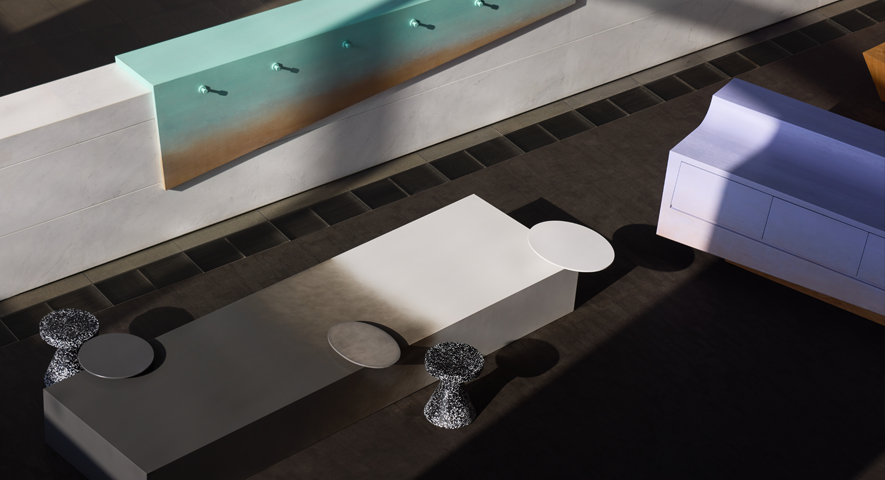EK & PP | Shenzhen Art Museum (New Venue): Integrating Art into the Community and Revitalizing Urban Public Spaces
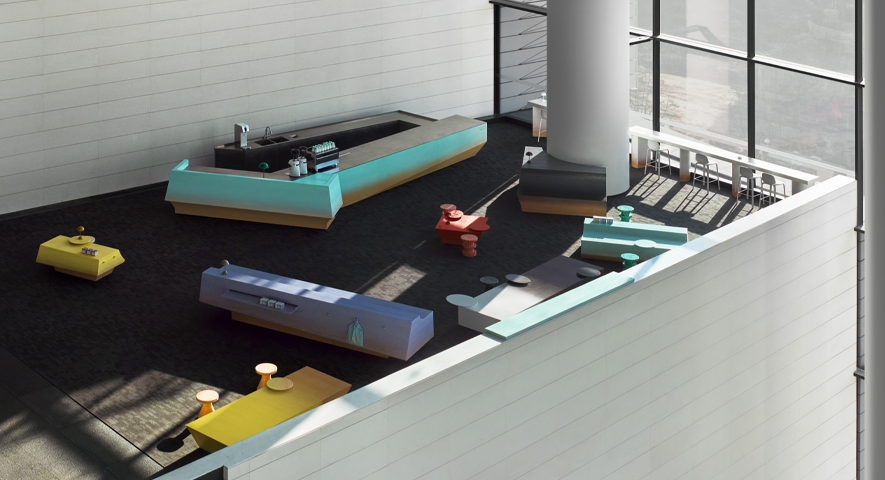
In cultural architecture, creating a soft and fluid buffer zone is essential for transitioning from static displays to dynamic interactions. The collaboration between YuQiang & Partners, EK Design, and PP Design Gallery has redefined the public spaces of the Shenzhen Art Museum's new venue by reshaping its spatial functionality and aesthetics. This transformative effort dissolves the boundaries between art and life, positioning the museum as a thriving cultural landmark where creativity, connection, and sensory engagement coexist.
CHAPTER 01
The Spirit of Place
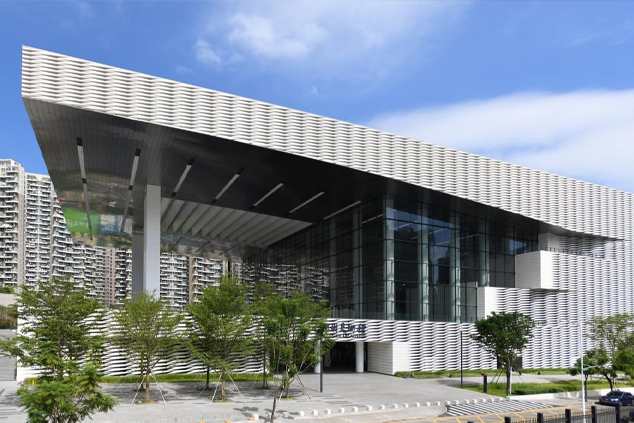
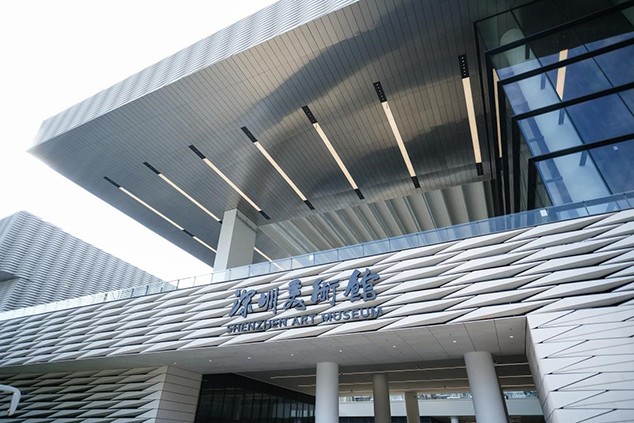
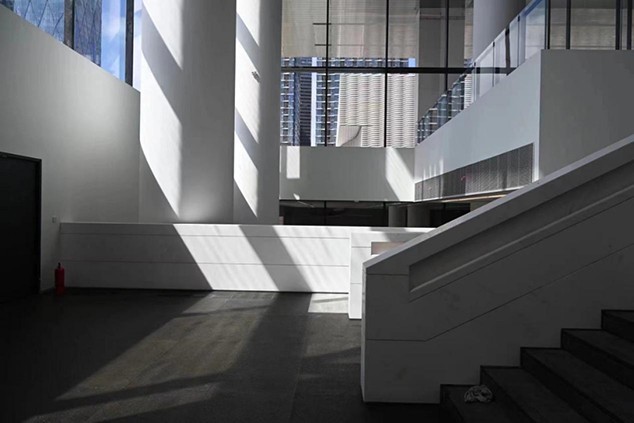 ©Shenzhen Art Museum (New Venue)
©Shenzhen Art Museum (New Venue)
The Shenzhen Art Museum (New Venue) is situated in the Shenzhen North Station Business District, at the geographical and geometric center of Shenzhen and along the eastern axis of the Guangdong-Hong Kong-Macao Greater Bay Area's urban development. It not only carries the growth mission of a "cultural community" but also shoulders the contemporary responsibility of propelling Shenzhen towards becoming a globally influential regional cultural center city.
In the past, cultural institutions often maintained a "vacuum distance" from their audiences: art, though visually proximate, struggled to truly integrate. However, from an international perspective, numerous exemplary urban public space art experiments have demonstrated that the integration of art with public life significantly enhances public engagement, becoming a vital component of urban culture.

The design team proposed a core renovation concept: spaces should not merely be "containers for exhibits" but rather "symbiotic communities"—they should be naturally embedded within the rhythm of public life, akin to streets and parks, nurturing spirits with art and connecting emotions through interaction.
The key to achieving this objective lies in "dissolving distance" and "activating participation." Guided by the principle of "illuminating space with art," the design team, on one hand, established the SZAM ART SPACE as a hybrid zone for the organic integration of function and artistic scenarios. On the other hand, using the two art installations, "Woven Fairytales" and "Moonlit White Mountain," as "soft mediums," they employed delicate visual language to break down physical boundaries and expand the child-friendly space.
CHAPTER 02
SZAM ART SPACE
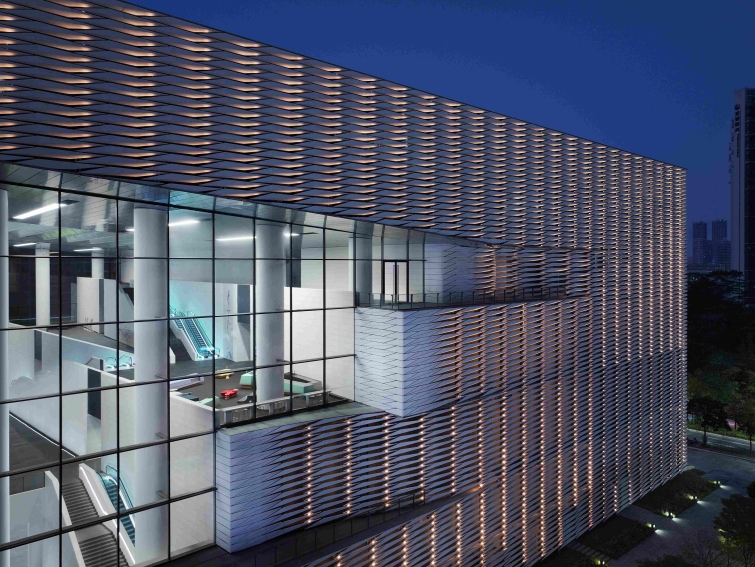

Located in the atrium of the Shenzhen Art Museum (New Venue)'s third floor, SZAM ART SPACE functions as an "open exhibition hall," drawing the public in.
This area features a thoughtfully curated collection of functional installations, including cultural and creative display stands, a coffee bar, and flexible seating. These elements not only cater to a rich array of functional needs but also dismantle the distinctions between exhibition hall, café, and cultural merchandise, inviting the public to participate in the quotidian moments of art.
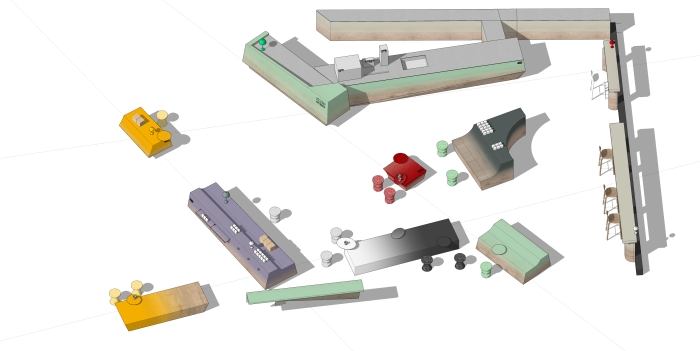
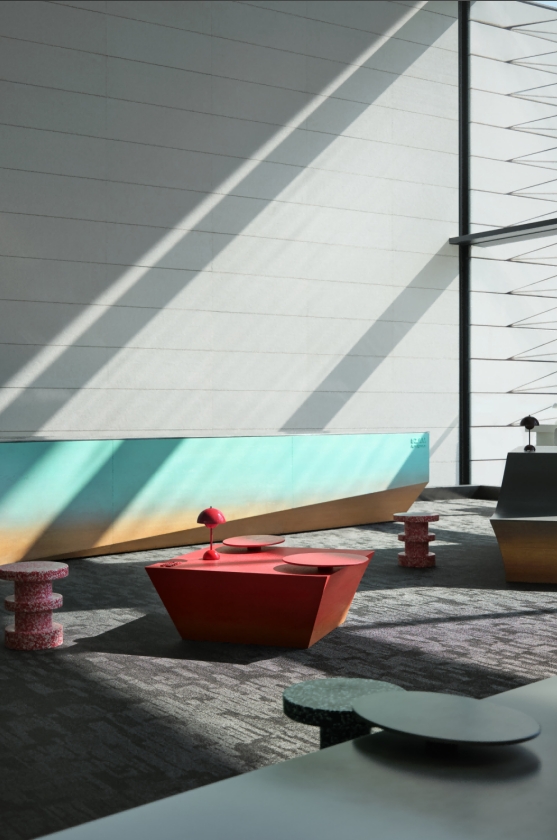
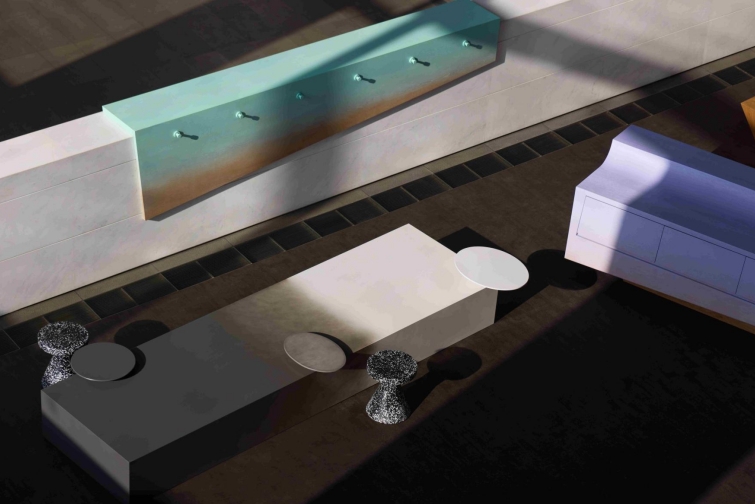

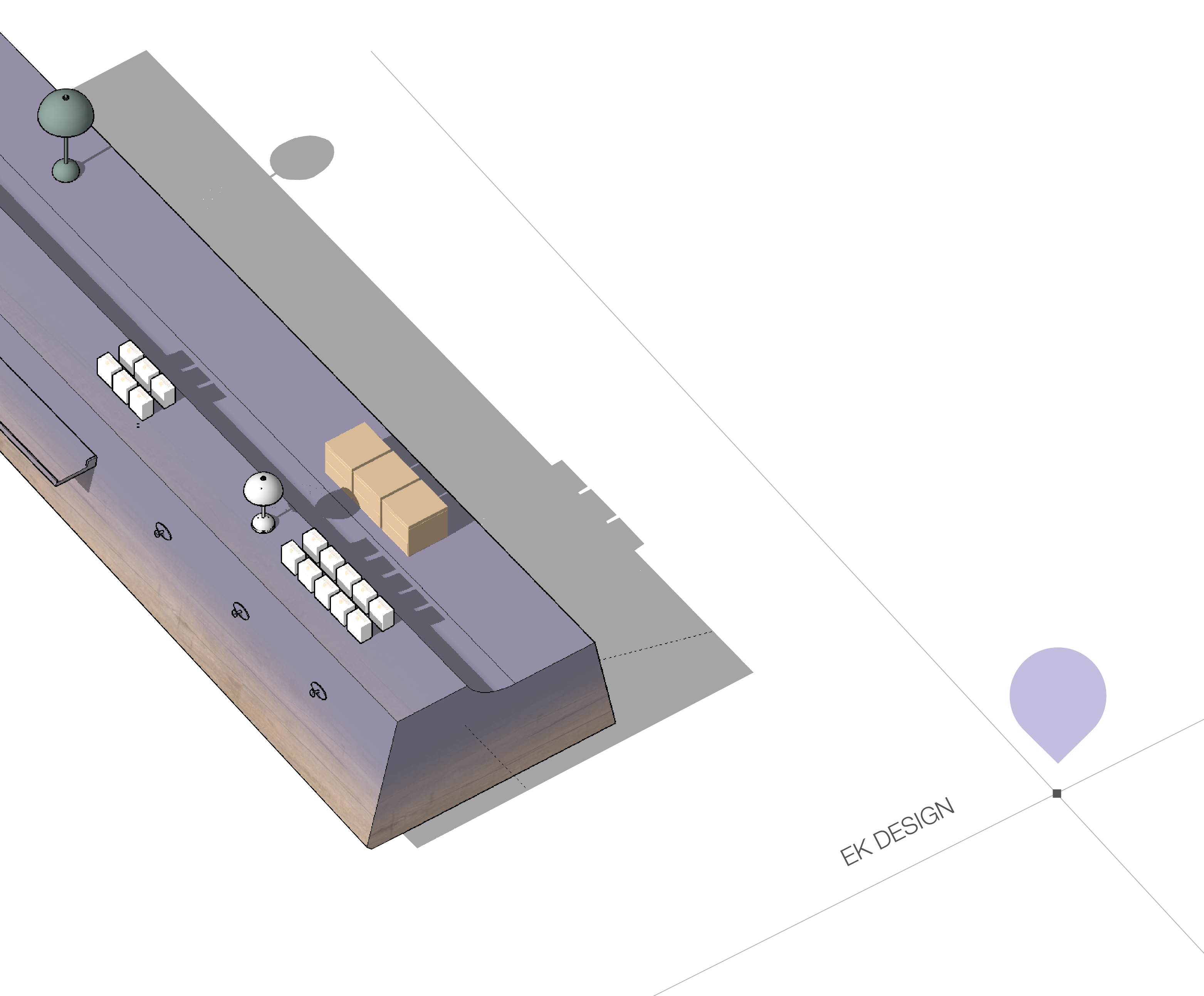
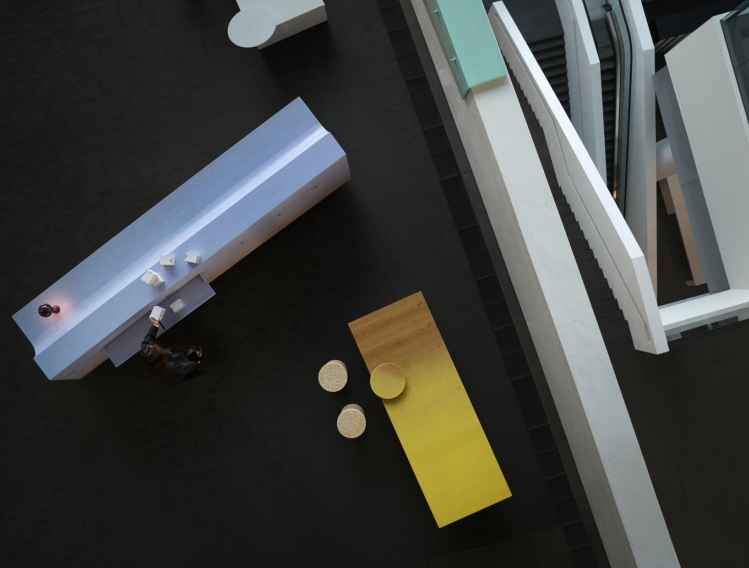
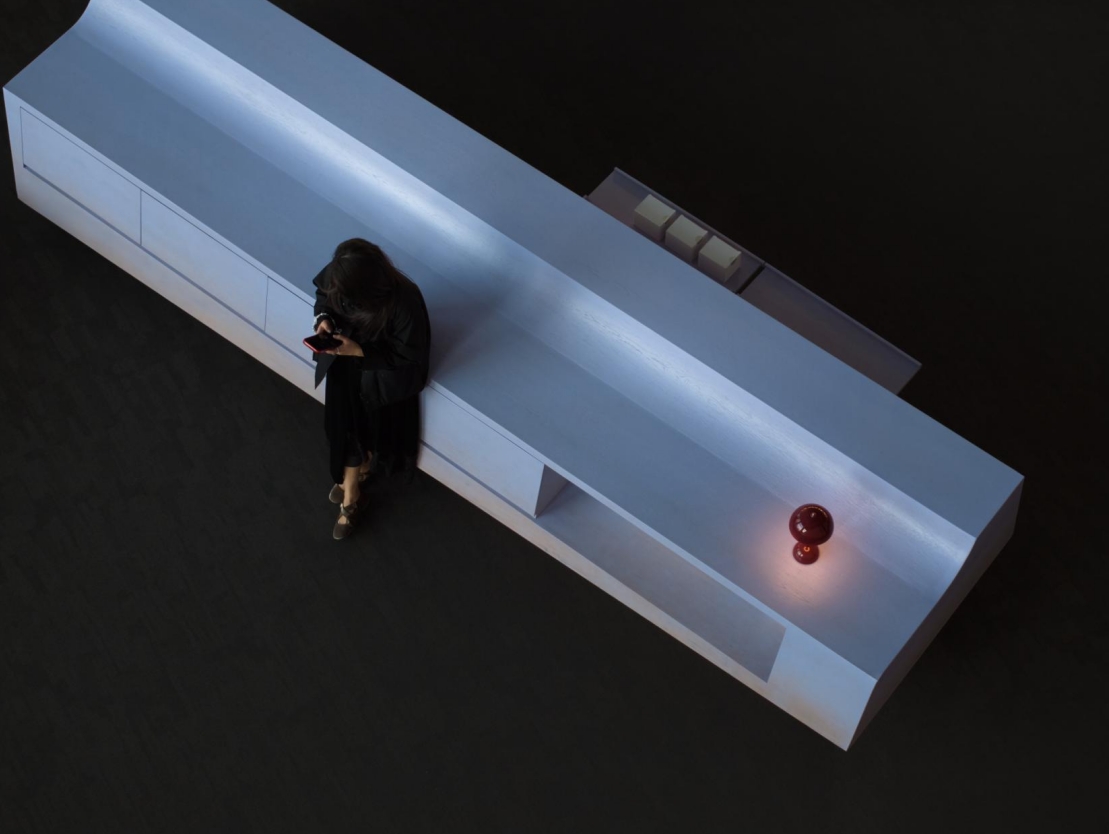
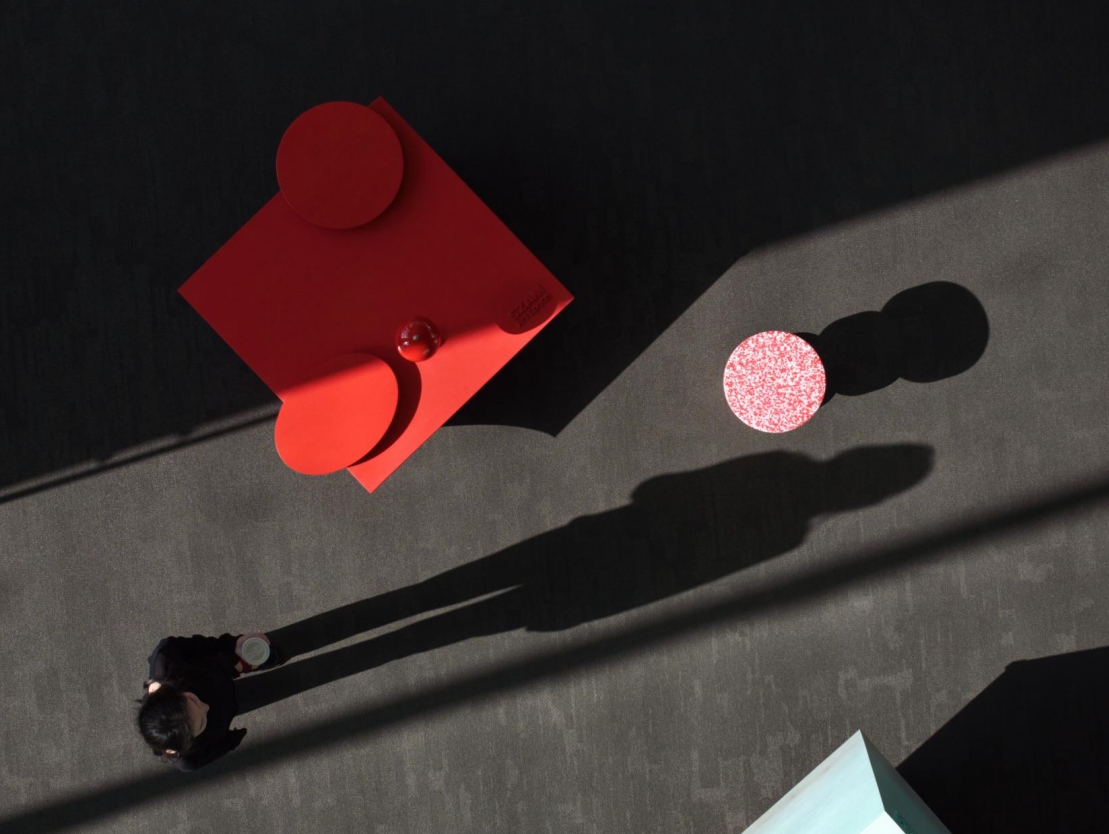
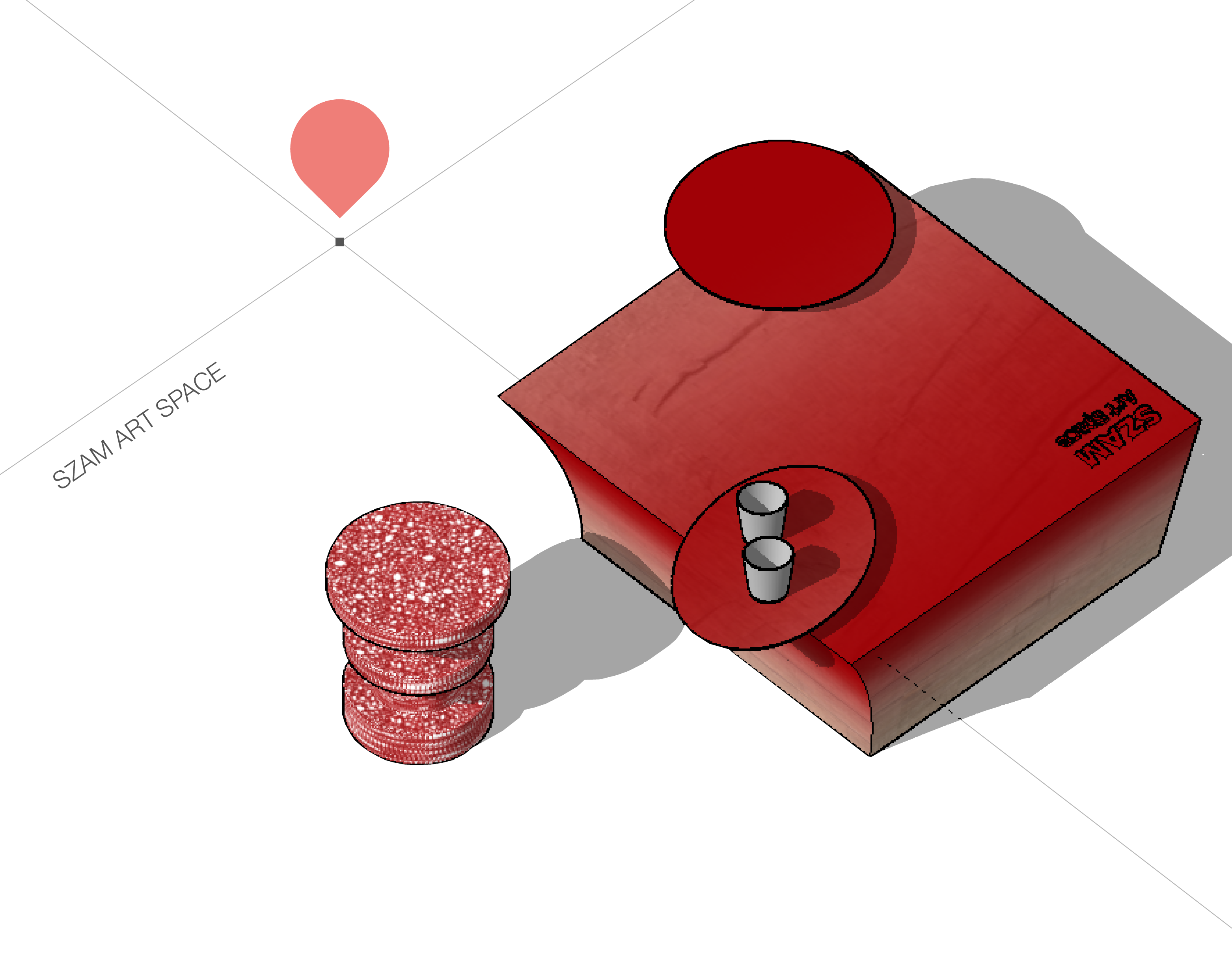
The installations incorporate a gradient color palette with low saturation, constructing a "dopamine" color system brimming with visual dynamism and emotional warmth, imbuing the space with a light, buoyant rhythm.
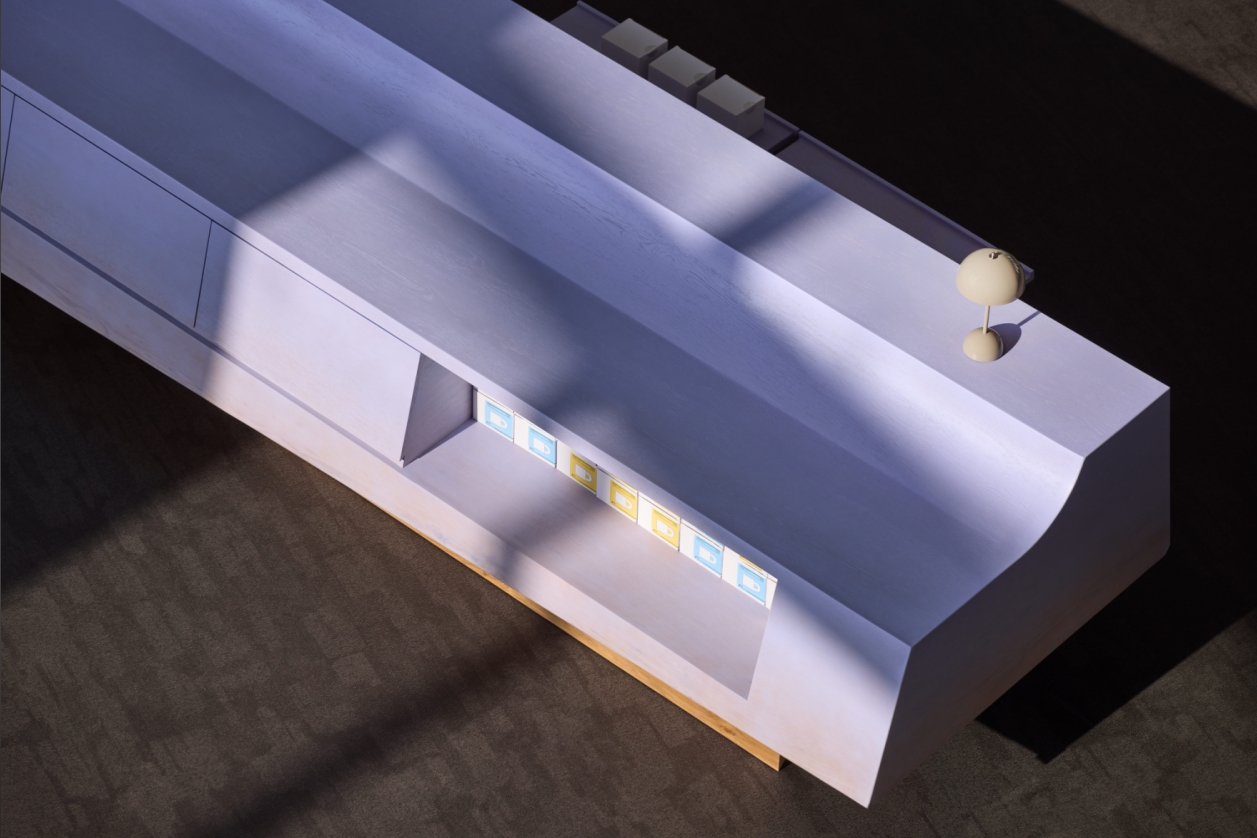
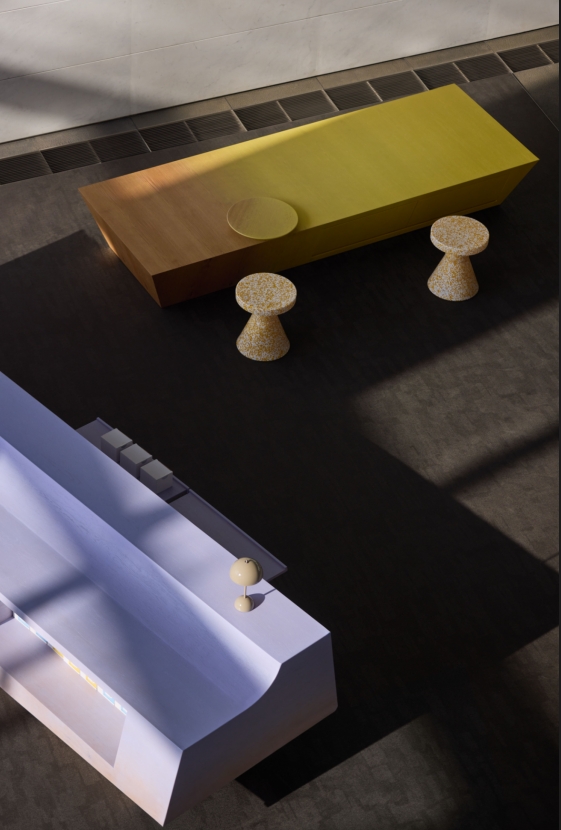

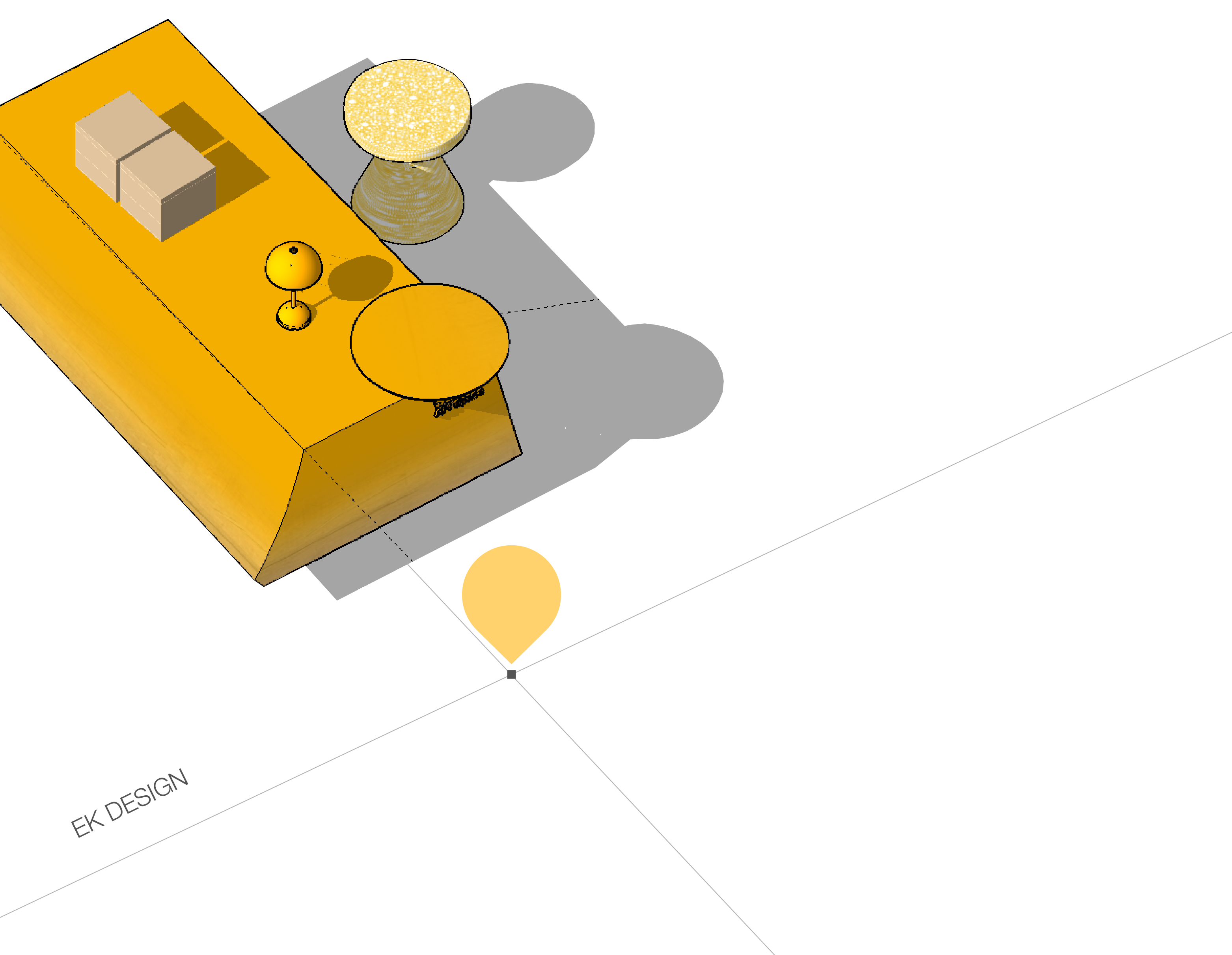
Echoing the building's forms, they appear to organically grow from the architectural texture. The seating designs, inspired by the simplicity of building blocks, can be freely repositioned, inviting visitors to creatively forge new spatial relationships.
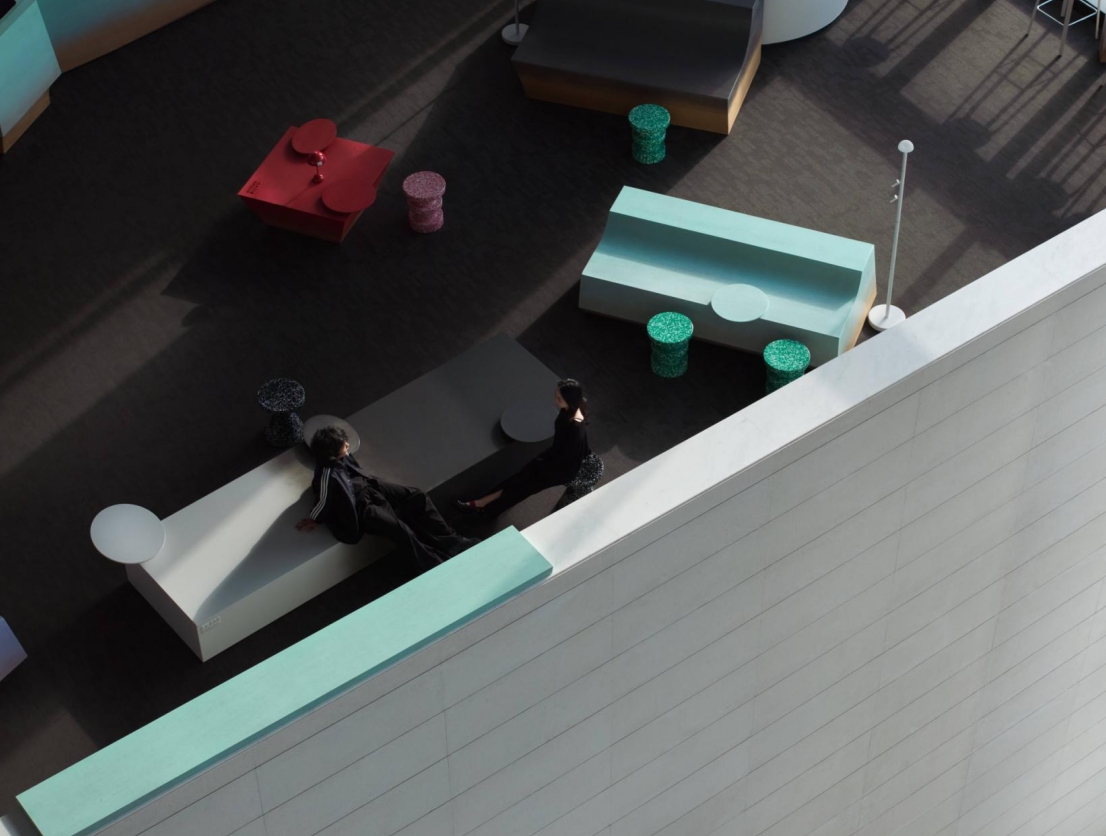
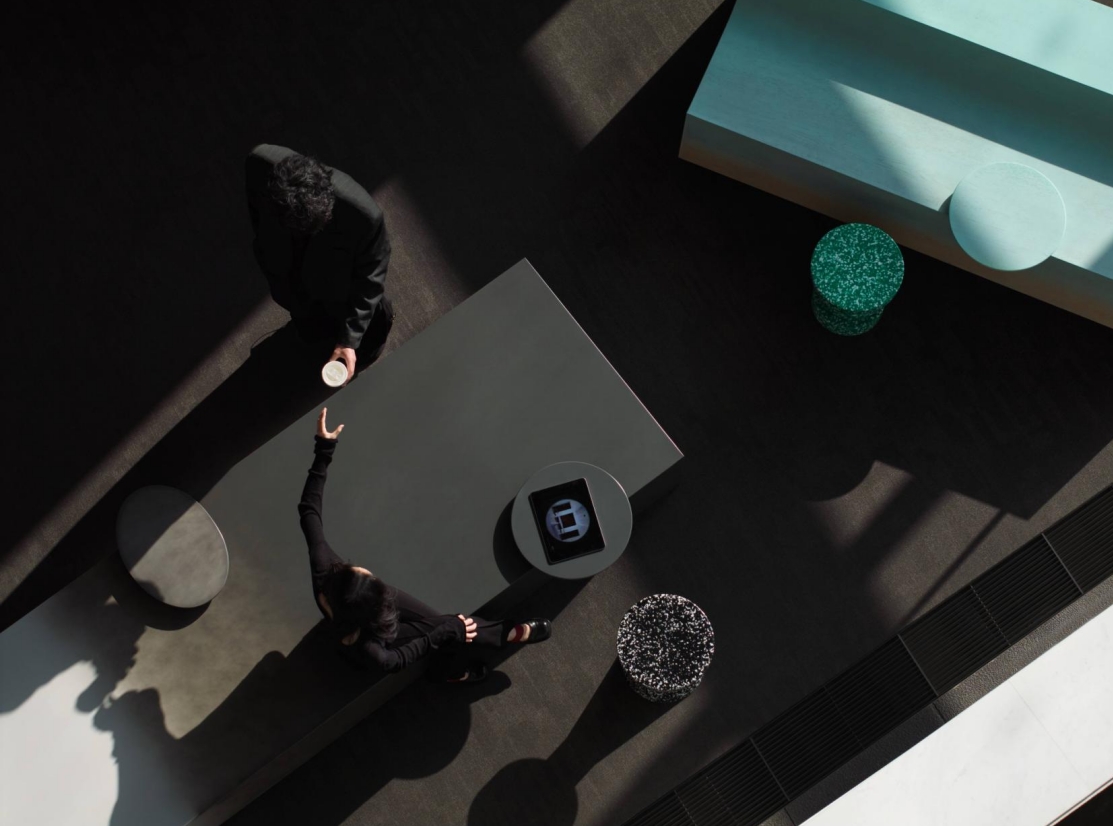
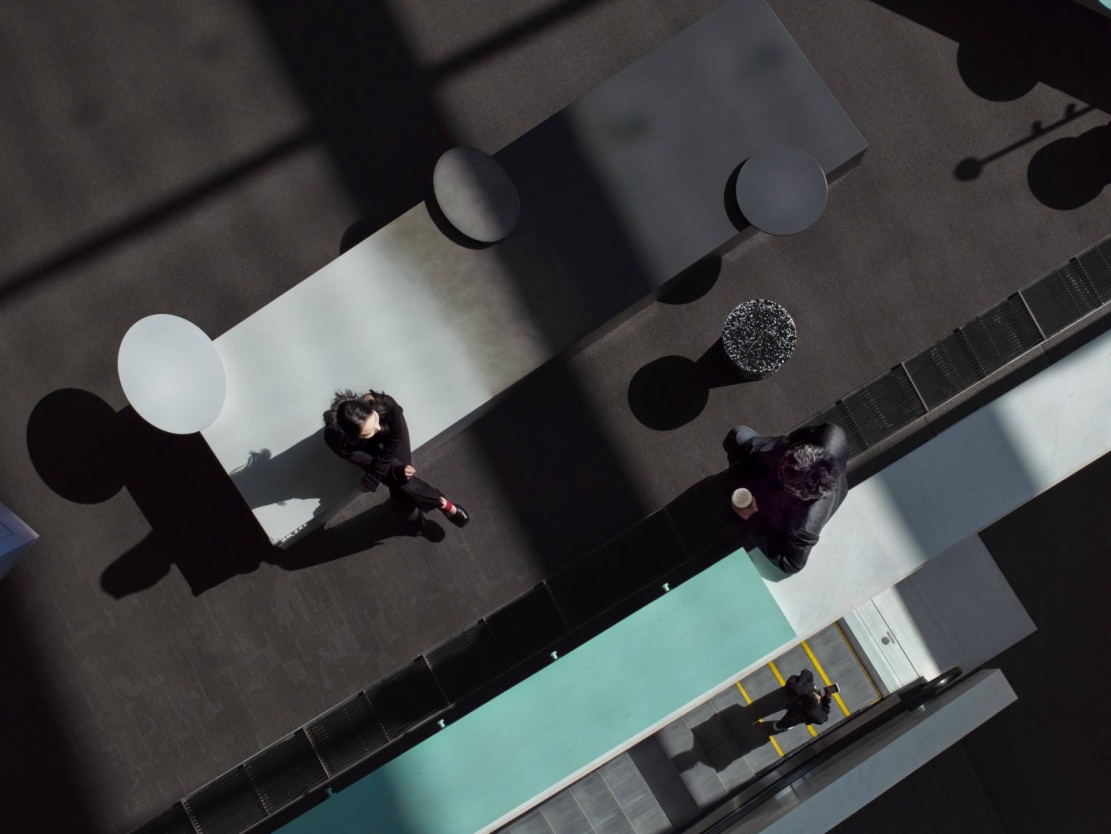
CHAPTER 03
Woven Fairy tales

On the outdoor fountain plaza of the Shenzhen Art Museum (New Venue), children joyfully chase water splashes. These vibrant scenes inspired PP Design Gallery to create a similarly dynamic, albeit more static, experience that allows visitors to transition naturally from the outdoors into the interior with a sense of delight, evoking a different kind of charm and artistic allure.
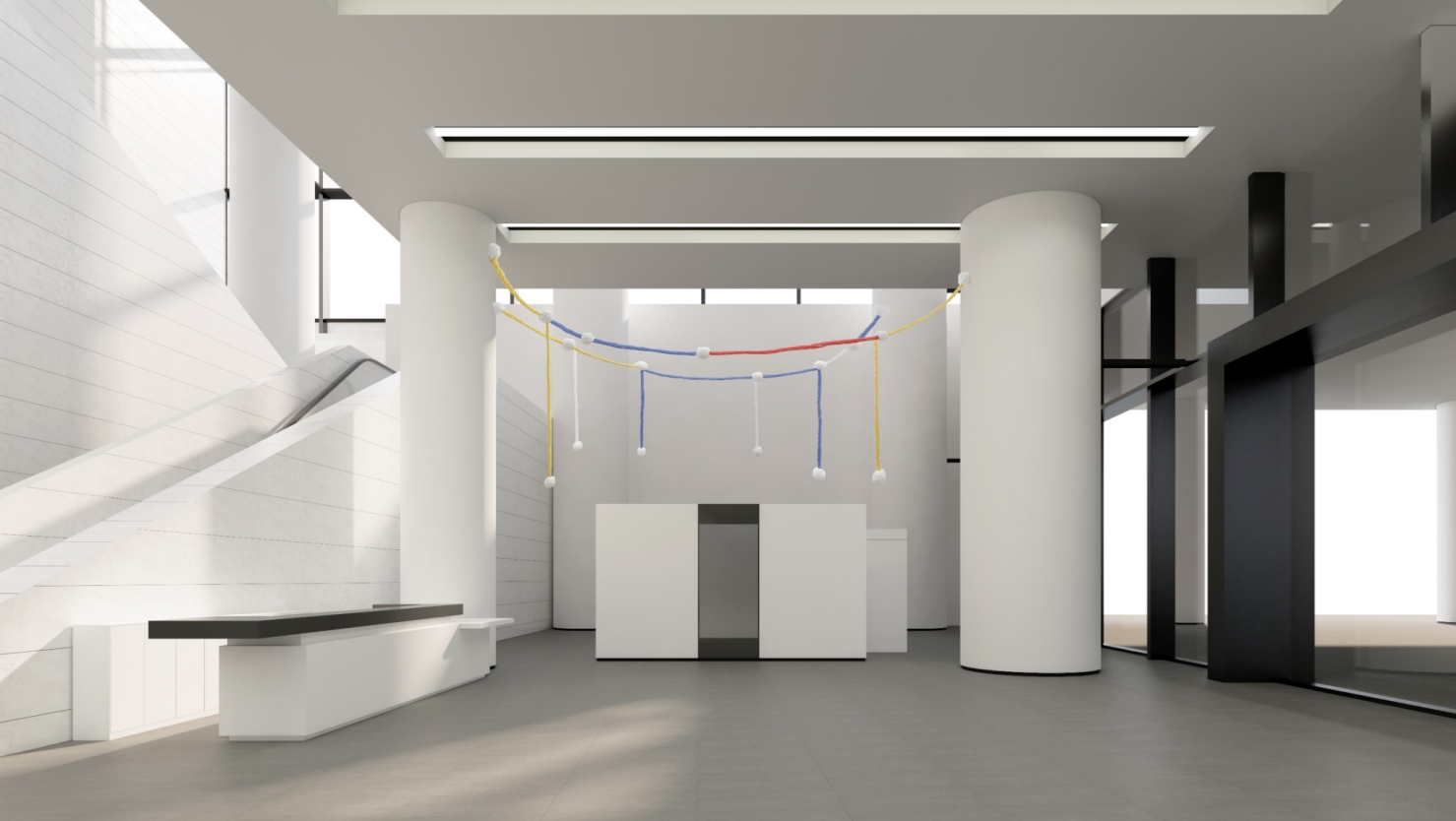
Art Installation "Woven Fairytales"
Color is woven into a fairy tale; like a soft story suspended here, they glimpse the threads of dreams and the boundaries of the unknown.
At the first-floor entrance, the thematic art installation titled "Woven Fairytales" is displayed. It merges traditional handcrafted techniques with contemporary artistic language, generating a visual effect that is both familiar and novel, acting as a nexus that bridges the present with the future, and art with daily life.
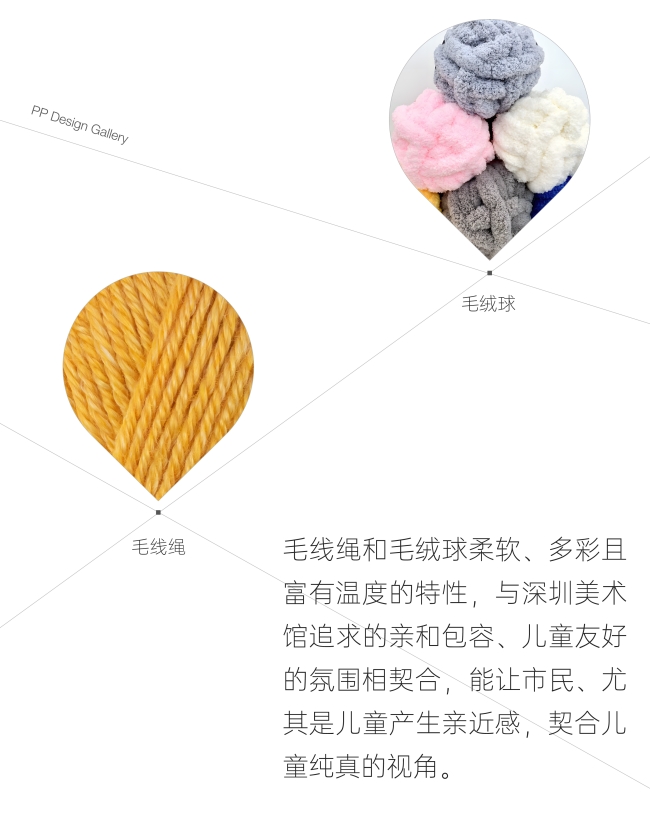
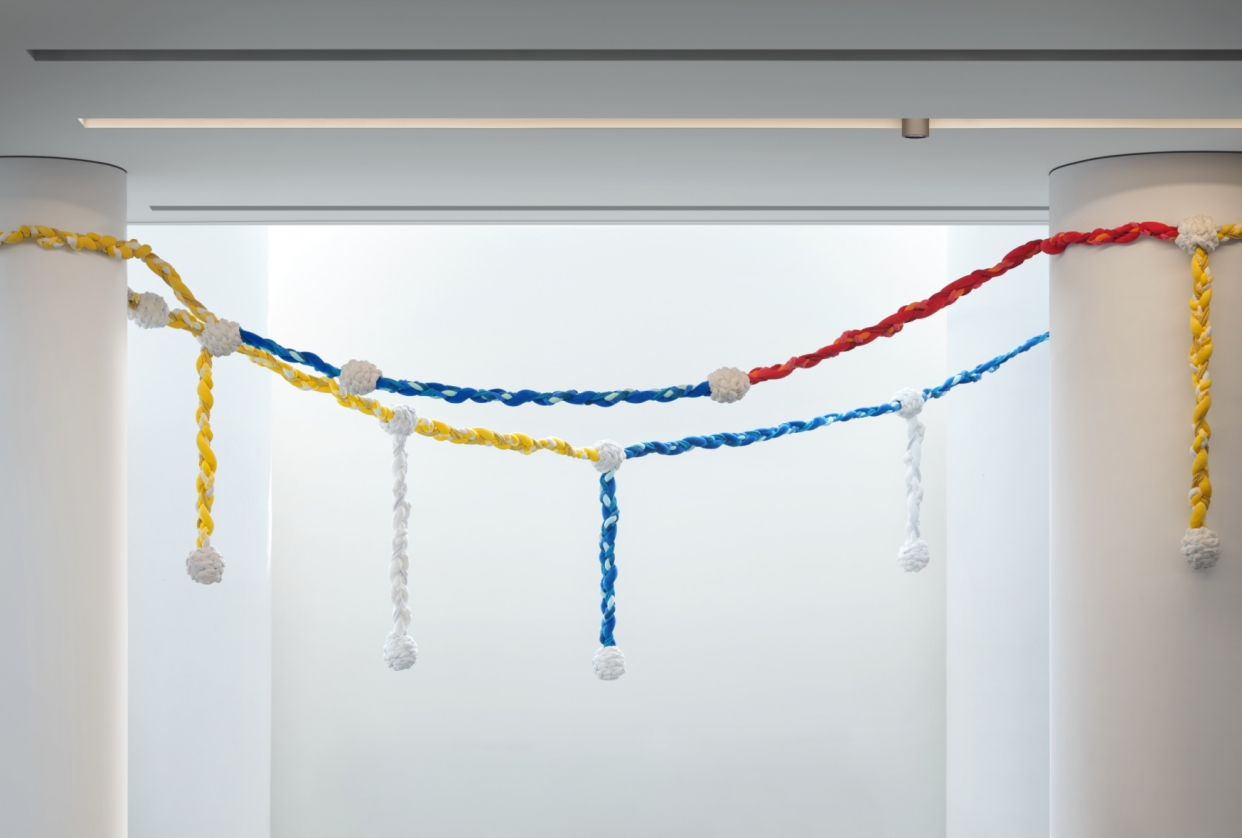
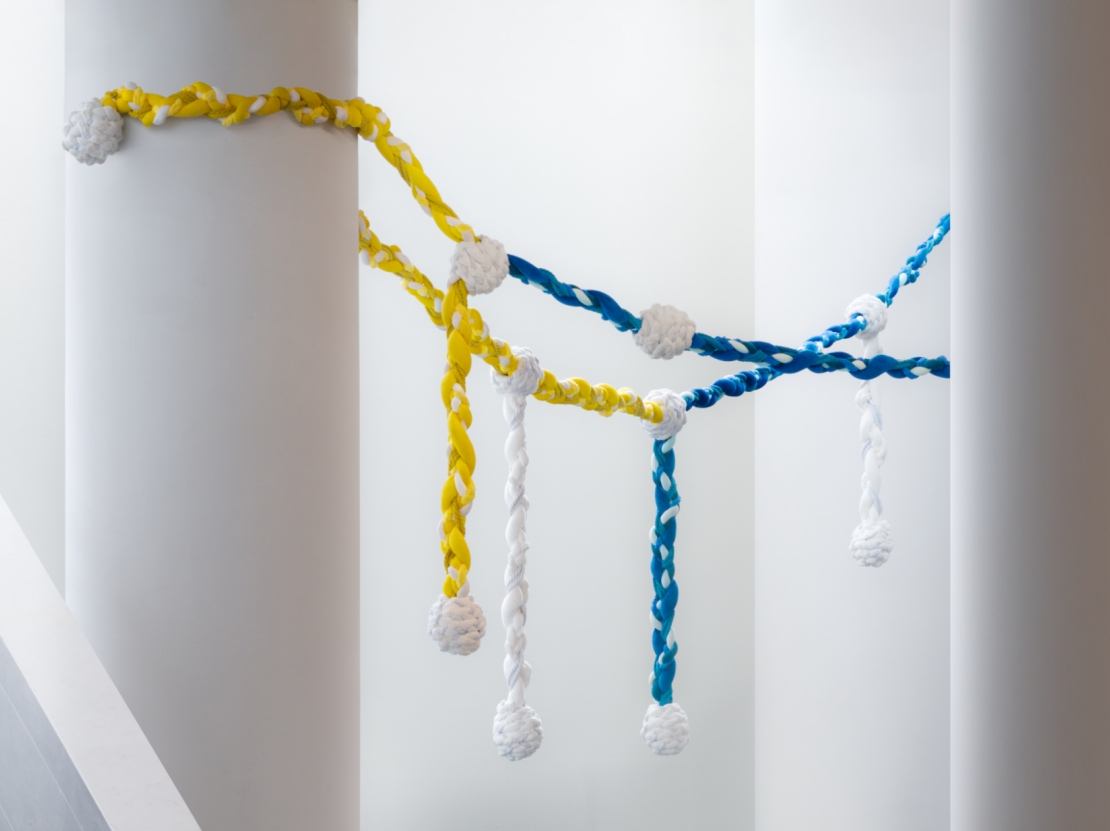
The inherent softness, vibrance, and warmth of the yarn and pom-poms resonate with the approachable, inclusive, and child-friendly atmosphere championed by the Shenzhen Art Museum (New Venue), fostering a sense of connection for citizens, particularly children.
The design of the color system is a dual response to children's psychology and the spatial attributes: red, yellow, and blue echo the foundational primary colors of the art domain, while white pays homage to the pristine spatial character of the museum. Together, they weave a dreamlike ambiance, imparting a unique visual experience and eliciting emotional resonance.
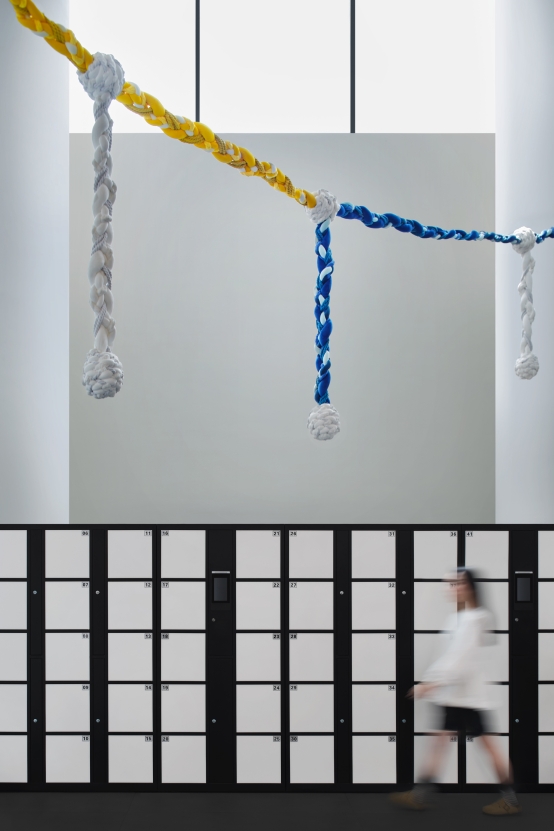
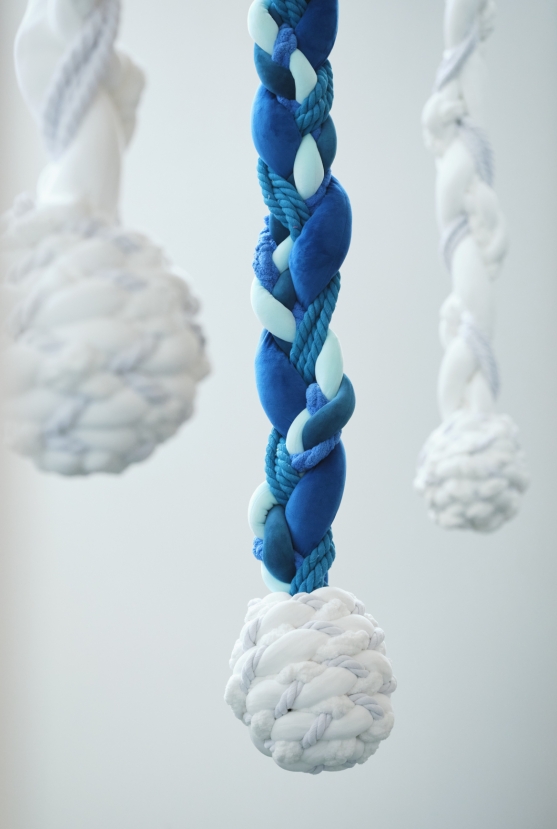
As the art installation flows through light and shadow, children are drawn, spontaneously leading their parents into the art museum. These natural movements not only forge an emotional bond between the public and the venue but also narrow the distance between art and everyday life, precisely as the design team envisioned—the ultimate meaning of public space is not to "exhibit" art, but to make art a connecting thread for every individual.
CHAPTER 04
Moonlit White Mountain
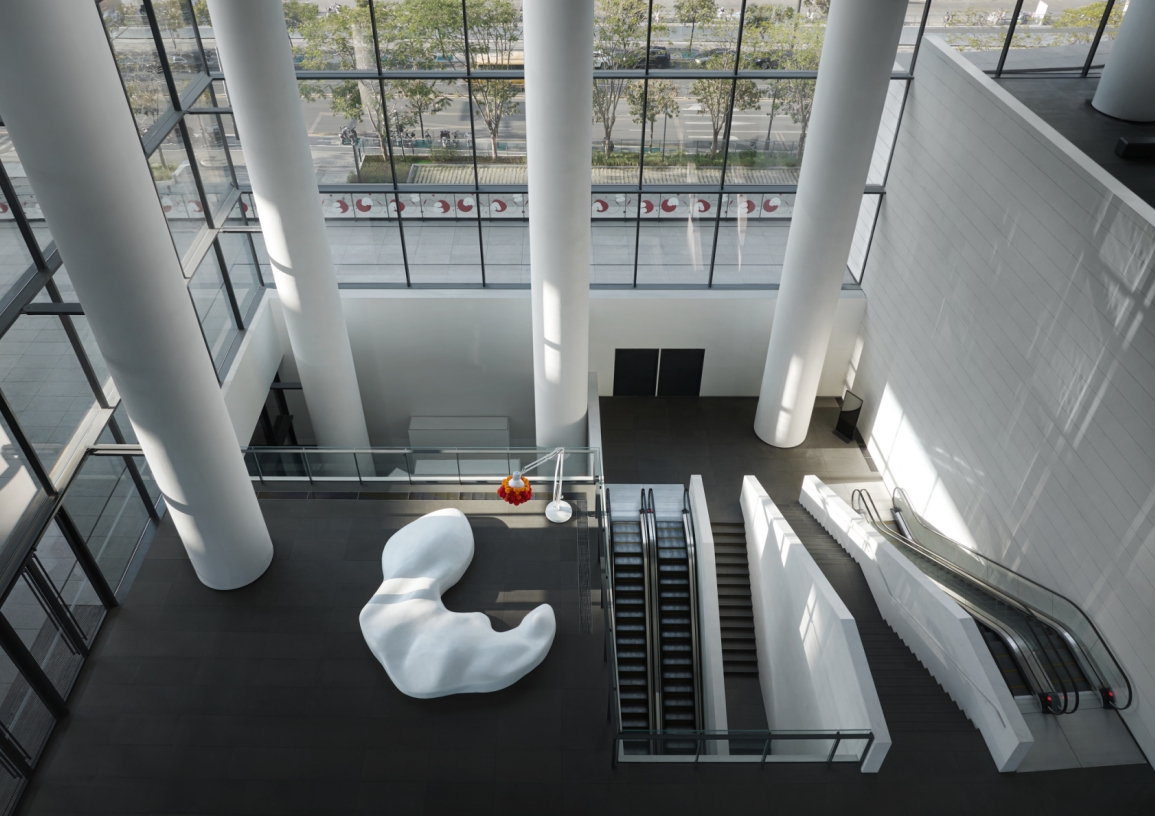
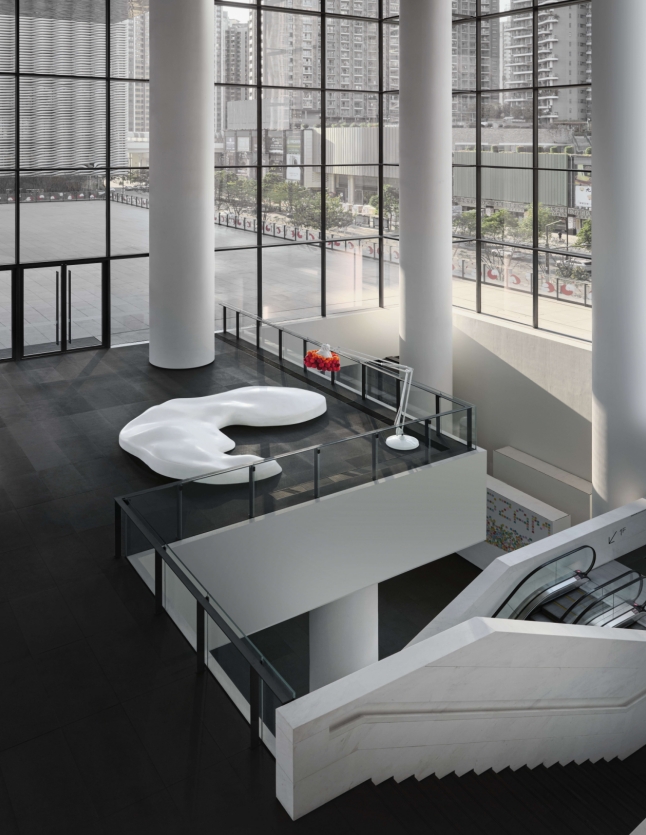
Art Installation "Moonlit White Mountain"
Light whispers like the moon; white mountains lie dormant. In the quiet embrace of light and shadow's discourse, imagination coalesces into an island.
Within the architectural spatial narrative, corners often become unassuming blank canvases. PP Design Gallery astutely perceived the narrative potential of these overlooked spaces. By artistically reassembling everyday elements, they challenge conventional perceptions, reshaping these areas into captivating "pausing points."
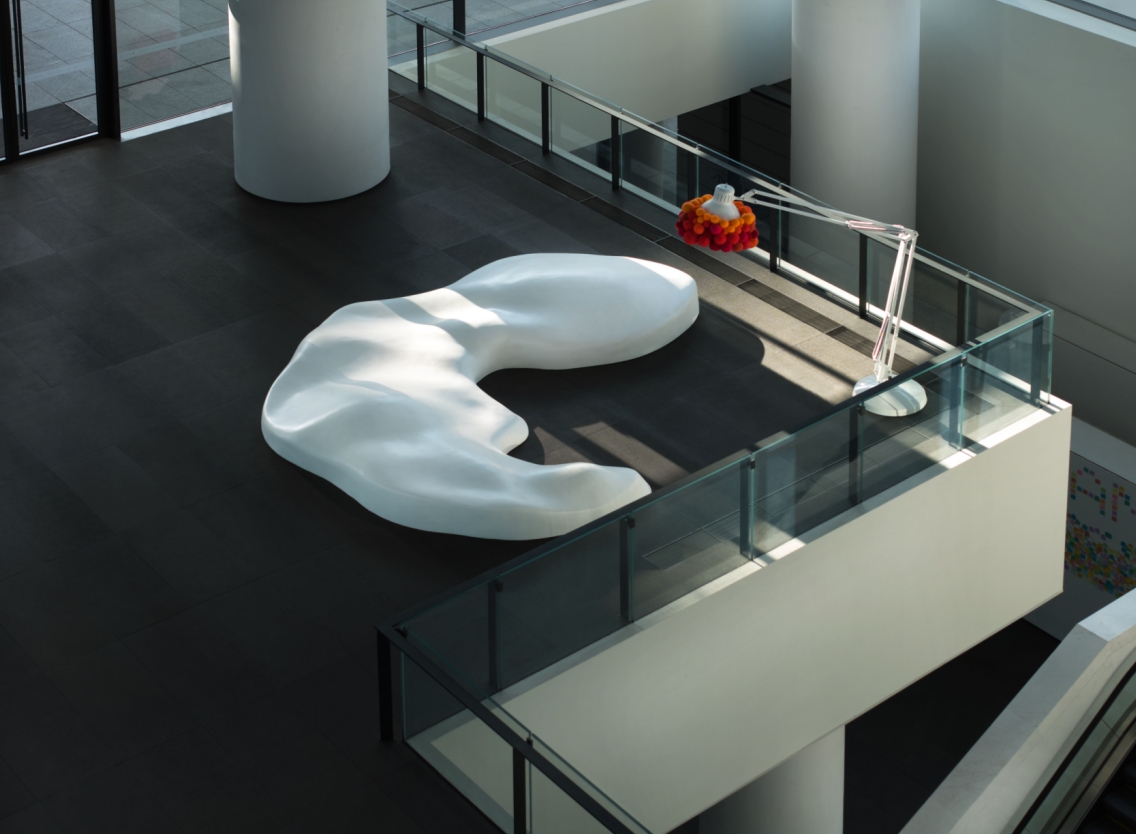
Lampshades, as an artistic extension of the installations, are enveloped in soft materials of varying circular sizes, conveying an image of warmth and convergence. Furthermore, the lampshade designs can be adapted to suit different exhibition themes, serving as an invitation for public participation—future endeavors will solicit DIY lampshade inspirations from citizens, creating a collective memory repository within public space and transforming art into a universal language of shared engagement.
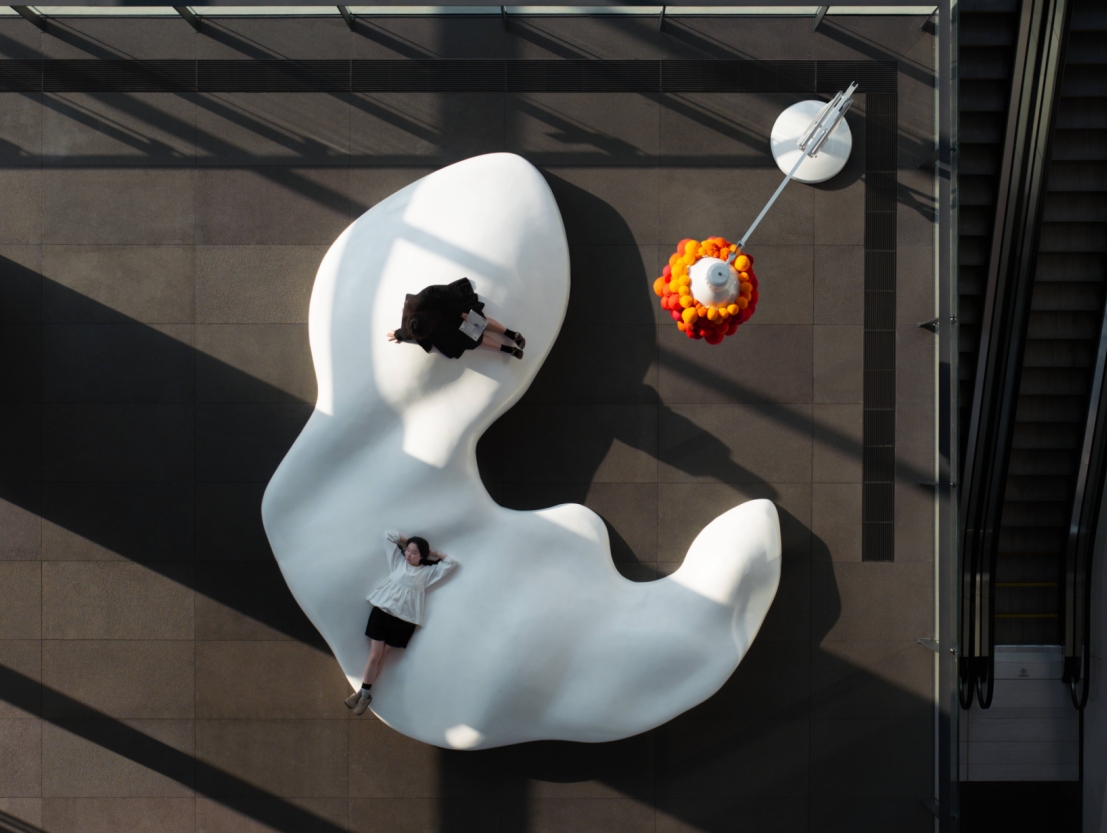
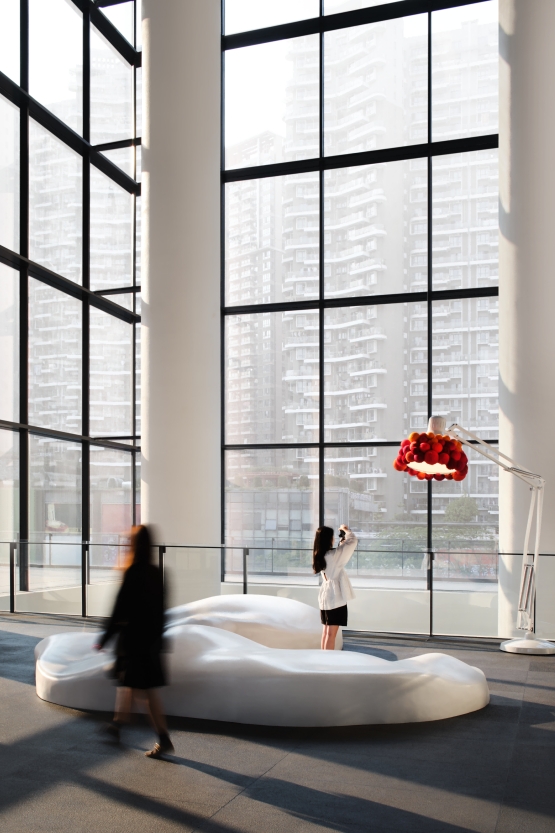
The staggered arrangement of "mountain peaks" not only lends the space a rich layering but also ignites a desire for exploration, inviting viewers to engage freely. By treating art installations as "lifestyle props" that can be sat upon, touched, and played with, the museum transcends its status as a cultural sanctuary to become a "spiritual playground" for citizens.
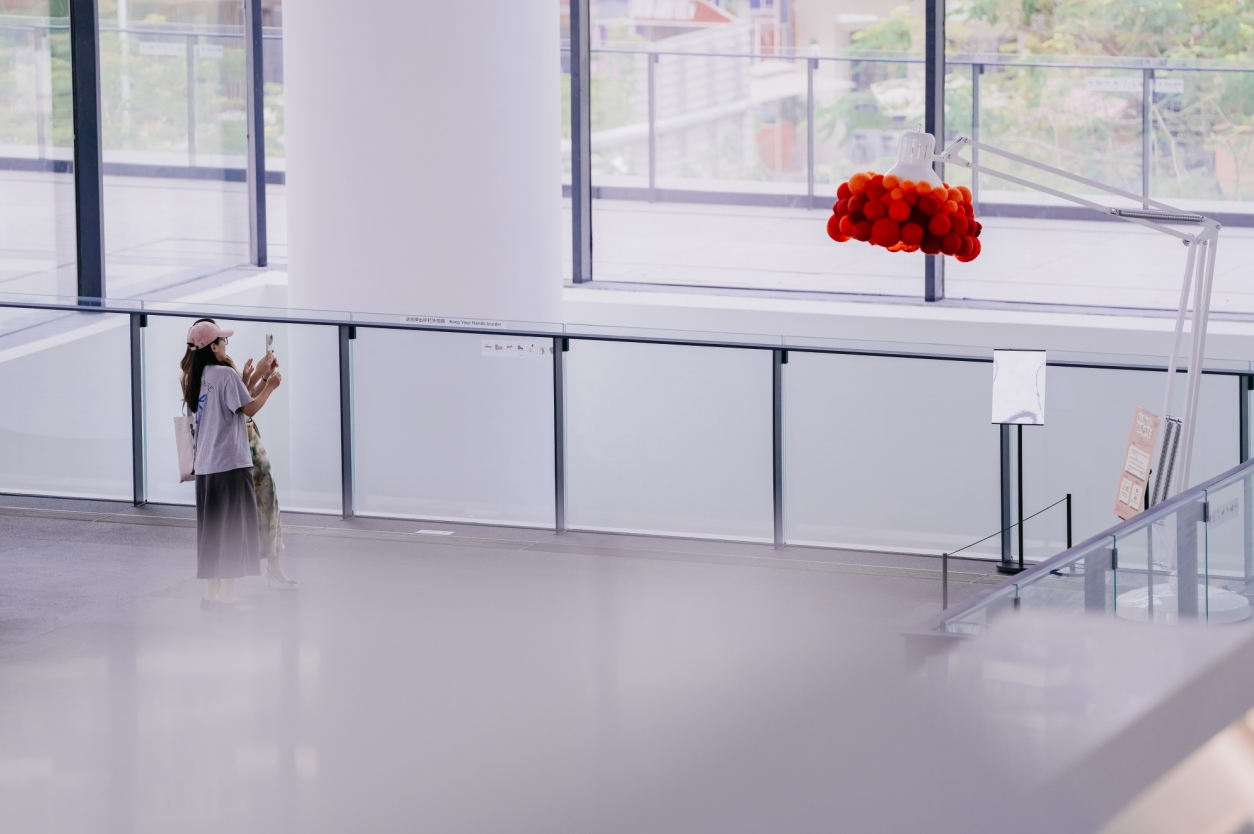
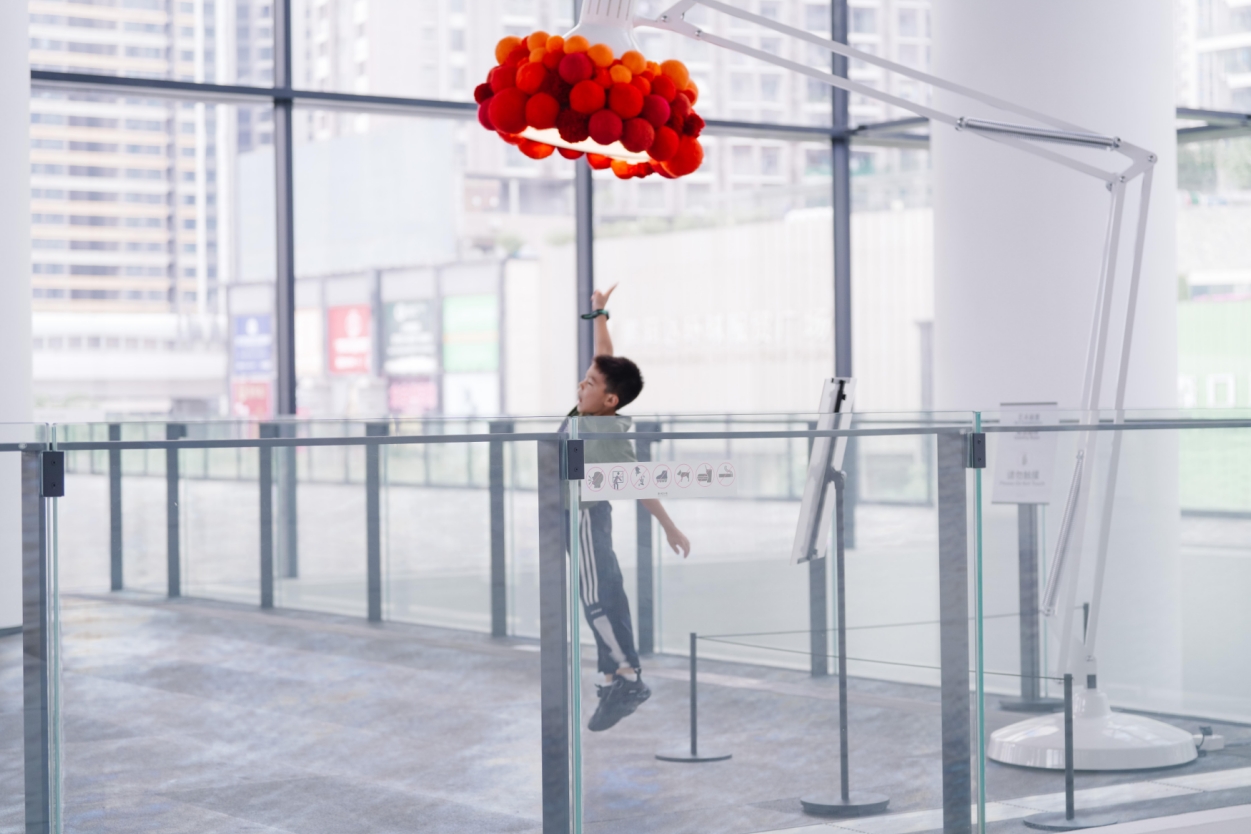
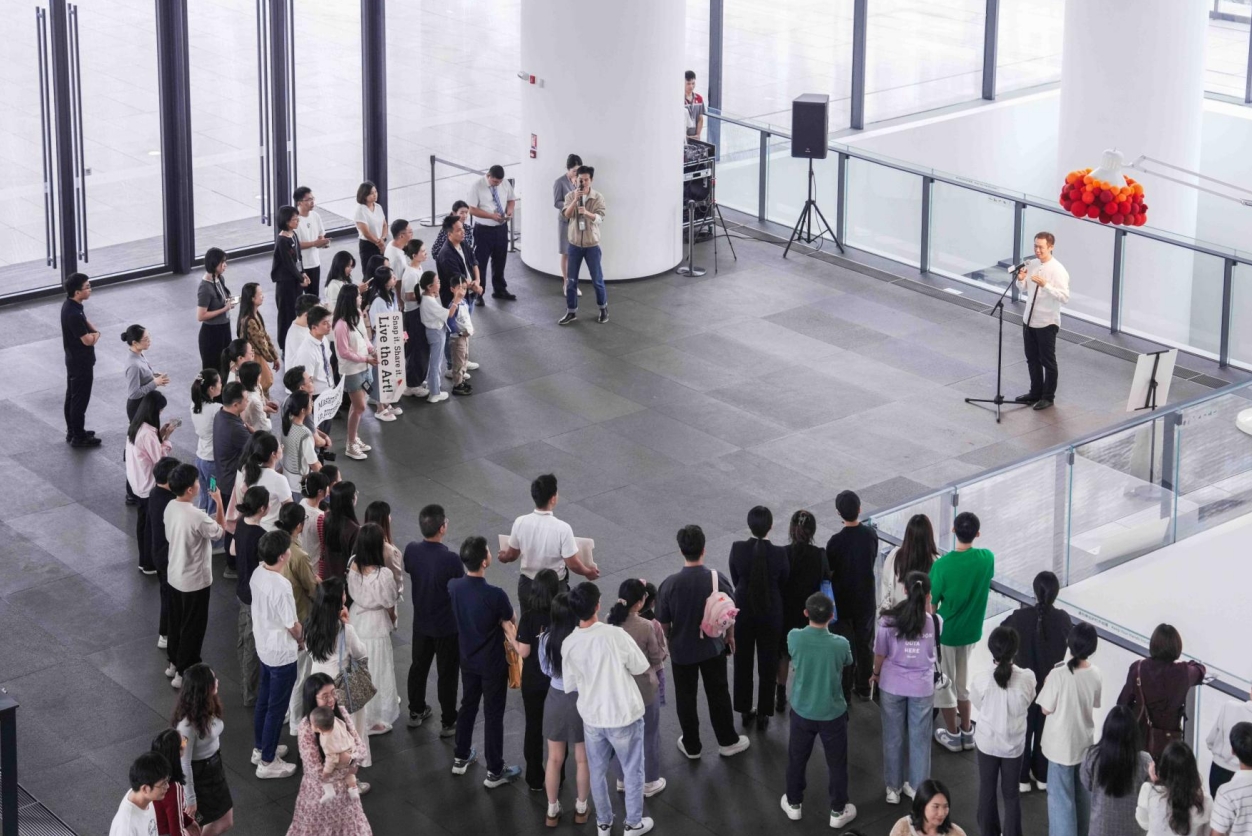 ©Shenzhen Art Museum (New Venue)
©Shenzhen Art Museum (New Venue)
Since its installation, "Moonlit White Mountain" has surpassed initial expectations in its utilization: people capture photos, repose with books, and engage in vibrant public activities here.
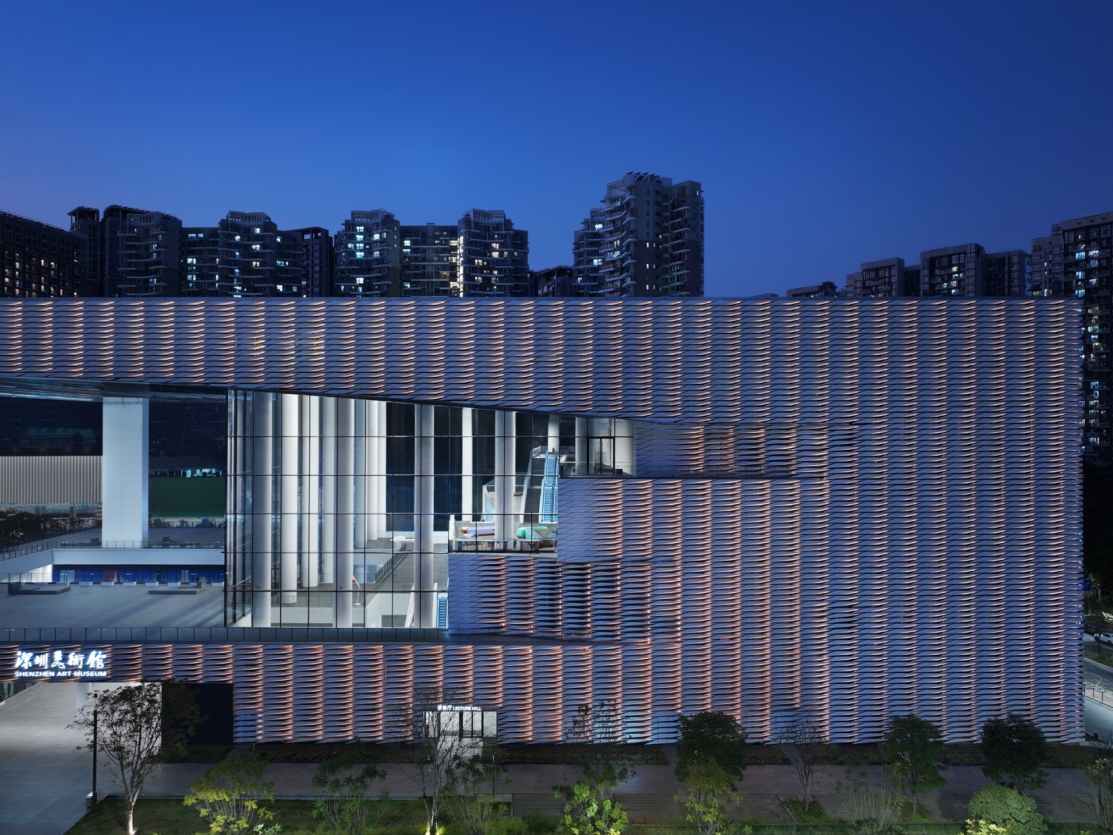
Through forward-thinking spatial planning and detailed contextual renovations, the design team has enabled the art venue to flourish as a composite cultural domain integrating aesthetics, social interaction, and spiritual resonance. The Shenzhen Art Museum (New Venue) acts as a dynamic interface within the city, driving social connection and innovation, inspiring people to communicate and share inspiration, and serving as a new engine for propelling urban cultural vitality.
Project Information
Project Name: Shenzhen Art Museum (New Venue) Art Space
Project Location: Longhua District, Shenzhen
Interior Design: EK Design
Spatial Planning: YuQiang & Partners
Project Photography: Huang Zaohui
